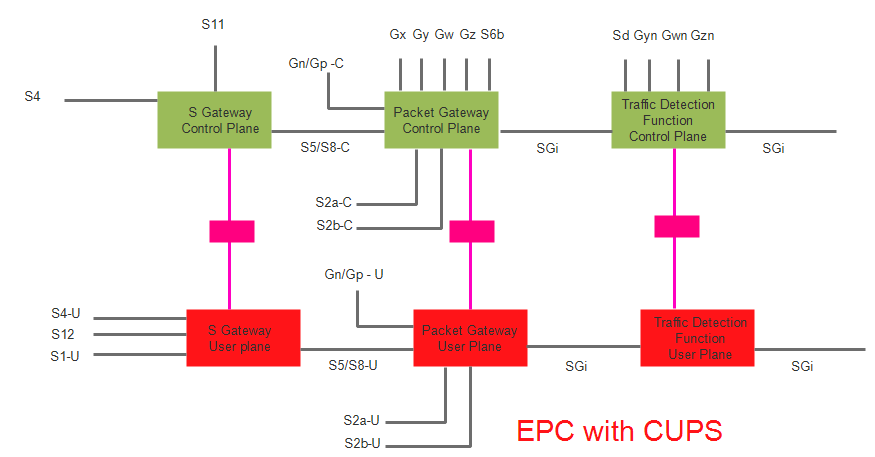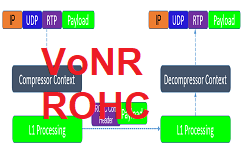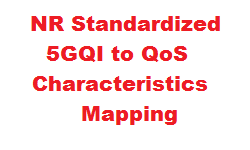Control and User Plane Separation for Next Generation EPC
CUPS means Control and User Plane Separation of EPC nodes and provides the architecture enhancements for the separation of functionality in the Evolved Packet Core’s SGW, PGW and TDF. This enables flexible network deployment and operation, by distributed or centralized deployment and the independent scaling between control plane and user plane functions – while not affecting the functionality of the existing nodes subject to this split.
Why CUPS Architecture Required?
- Large Volume Data Support: Mobile operator’s user data traffic has been doubling on an annual basis in recent years. The reasons for this growth in traffic are the rapidly increasing use of smart devices, the proliferation of video and other applications that they support and the use of USB modem dongles & personal hot-spots using cellular networks.
- Rich Communication Services (RCS): The penetration of mobile terminals is increasing worldwide and the interest in content-rich multi-media services (e.g. OTT video streaming services, Person to person video, content sharing) rising, this trend of rapidly increasing data traffic is expected to continue and accelerate.
- Customer Experience and Low Latency : There is a strong consumer demand for user experience improvements, with lower latency being one of the critical KPIs to be met on the way.
CUPS Architecture Advantages:
- Reducing Latency on application service, e.g. by selecting User plane nodes which are closer to the RAN or more appropriate for the intended UE usage type without increasing the number of control plane nodes.
- Supporting Increase of Data Traffic, by enabling to add user plane nodes without changing the number of SGW-C, PGW-C and TDF-C in the network.
- Locating and Scaling the Control Plane and User Plane resources of the EPC nodes independently.
- Independent evolution of the Control Plane and User Plane functions.
- Enabling Software Defined Networking to deliver user plane data more efficiently.
Non-CUPS vs CUPS Architecture
CUPS architecture for EPC was first introduced in release 14. All earlier EPC specification follows NON-CUPS architecture. Below figure show basic difference.


Whats New in CUPS
- The Control Plane function terminates the Control Plane protocols: GTP-C, Diameter (Gx, Gy, Gz).
- A Control Plane function can interface with multiple User Plane functions, and a User Plane function can be shared by multiple Control Plane functions.
- An UE is served by a single SGW-Control Plane but multiple SGW-User Planes can be selected for different PDN connections. A user plane data packet may traverse multiple User Plane functions.
- The Control Plane function controls the processing of the packets in the User Plane function by provisioning a set of rules in Sx sessions, i.e. Packet Detection Rules for packets inspection, Forwarding Action Rules for packets handling (e.g. forward, duplicate, buffer, drop), QoS Enforcement Rules to enforce QoS policing on the packets, Usage Reporting Rules for measuring the traffic usage.
- All the 3GPP features impacting the User Plane function (PCC, Charging, Lawful Interception, etc) are supported, while the User Plane function is designed as much as possible 3GPP agnostic. For example, the UPF is not aware of bearer concept.
- Charging and Usage Monitoring are supported by instructing the UP function to measure and report traffic usage, using Usage Reporting Rule(s). No impact is expected to OFCS, OCS and the PCRF.
- The Control Plane or User Plane function is responsible for GTP-u F-TEID allocation.
- A legacy SGW, PGW and TDF can be replaced by a split node without effecting connected legacy nodes.
Reference::
- TS 23.214 Architecture enhancements for control and user plane separation of EPC nodes.
Related Post:
- 5G System Connection Management: CM-Idle and CM-Connected
- 5G NR Global Unique Temporary Identifier (GUTI)
- 5G Identifiers SUPI and SUCI



